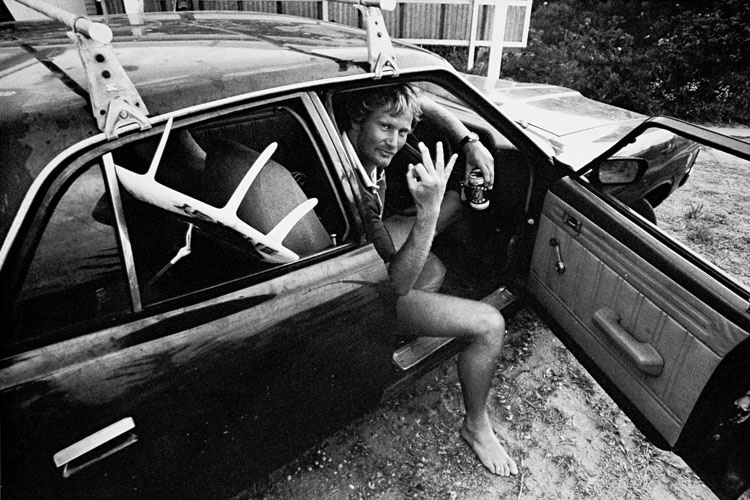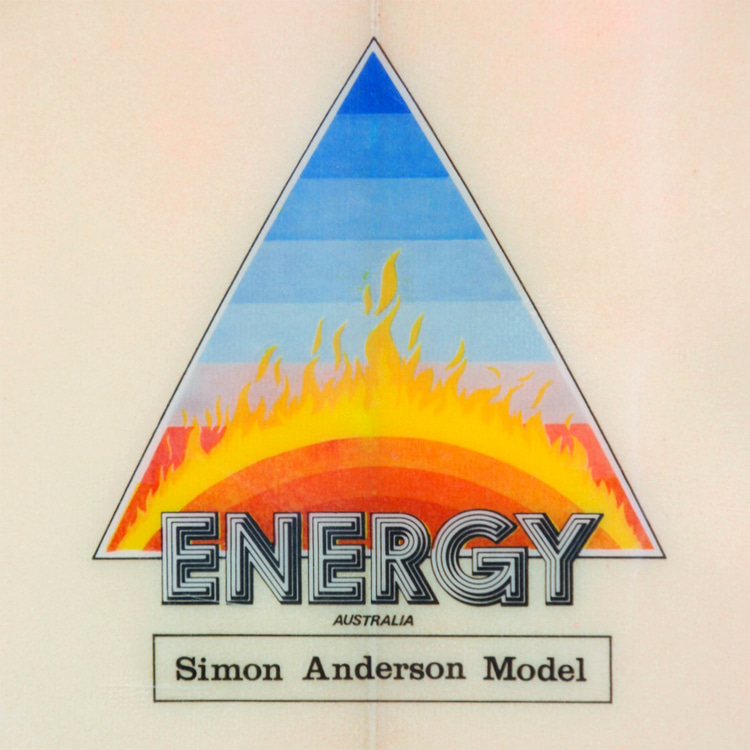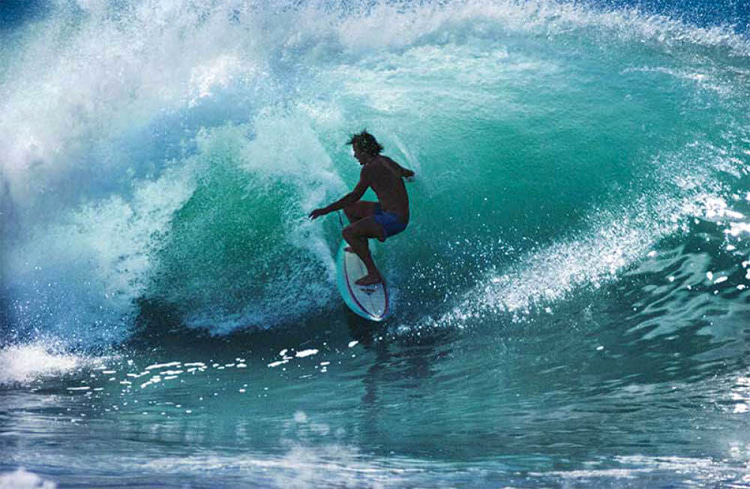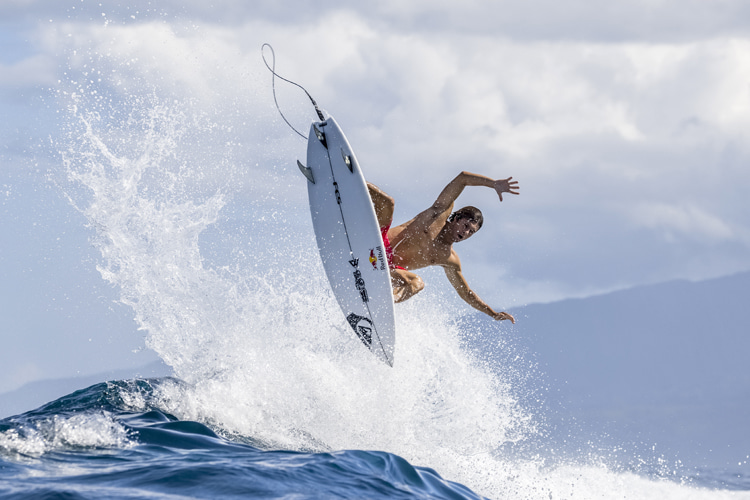The thruster is the world's most widely used and spread surfboard fin setup. Here's how the three-fin configuration changed surfing forever.
In under 100 years, the sport of surfing witnessed several engineering and hydrodynamical revolutions.
They went from 20 feet (six meters) and 77 pounds (33 kilograms) to six feet (1.82 meters) and six pounds (2.7 kilograms).
Core materials, structure, and shape evolved dramatically to the point where you can now have five different fin setups on the same board.
Fins are an essential component of surfboards. They are responsible for adding stability, control, and direction.
In other words, fins can transform an unrideable board into high-performance wave-riding equipment.
The original three-fin thruster design was the most critical event in surfboard history after the introduction of the single fin.

Simon Anderson's Growing Career
Simon Anderson was born on July 17, 1954, in Sydney.
According to "The Encyclopedia of Surfing," he spent his first five years in the suburb of Balgowlah before his father won the lottery and moved the family to a beachfront house at Collaroy, near Narrabeen.
Simon's older brother, Mark Anderson, swam for Australia in the Mexico 1968 Olympic Games.
Simon was also a regular swimmer until his 13th birthday, when he received his first new surfboard.
In 1971, the 17-year-old won the junior division in both the Australian National Titles and the Bells Beach contest.
In 1972, the 6'3" regular footer successfully defended both titles.
In the national championships, the power surfer beat future world champions Mark Richards and Wayne Bartholomew.
Known for his intense turns performed with a graceful and easygoing style, Anderson's natural talent took him to the forefront of national and international competitive surfing.
In 1973, he finished third at Bells Beach and sixth in the Coca-Cola Surfabout held at Narrabeen, Anderson's home break.
Four years later, the Australian won both events, placed fourth in the Pipeline Masters, and finished the world tour ranked third.
He was becoming one of the world's best surfers in big waves, particularly at Sunset Beach on the North Shore of Oahu, Hawaii.
"In late 1977, Mark Richards introduced his version of the twin-fin, a pivoting small-wave board that helped him win four world titles," notes Matt Warshaw, author of "The Encyclopedia of Surfing."
The feat made the twin-fin the hottest board of the late 1970s and early 1980s.
"While Anderson maintained a high position in the world rankings, finishing 15th in 1979 and sixth in 1980, he struggled with the hard-to-control twin-fin, and in 1979 began thinking of ways to modify the design."
"He'd been shaping surfboards since 1972, had founded his own Energy Surfboards label in 1975, and had developed into one of Australia's most respected board designers."

Thruster: A Eureka Moment
By 1970, Dick Brewer and Reno Abellira had already designed a board that featured a standard-sized middle fin flanked by a pair of small half-moon "finlets."
In 1972, Ventura brothers Malcolm and Duncan Campbell introduced the "Bonzer," a surfboard design with deep concave channels on the bottom, a regular single fin, and a pair of long keel-like side fins.
Both proposals never quite stuck until the moment that changed surfboard design arrived in October 1980.
"Simon Anderson noticed that fellow Narrabeen surfer-shaper Frank Williams had placed a small half-moon fin near the tail of his twin fin as a stabilizer," stresses Warshaw.
"Inspired, Anderson immediately made himself a square-tailed board with three like-sized fins, all smaller than those used on a twin-fin."
After tweaking and fine-tuning the placement of the fins, the surfer-shaper had the board he'd been looking for.
"It planed and held its turning speed like a twin fin. But it had the grip and drive of a single-fin," states Warshaw.
Name of baptism - thruster.
The new design's title aimed to describe the tri-fin's racy feel and the fact that it added thrust to the surfboard's turning capabilities.
Anderson embarked on a missionary journey to convince the surfing world that the three-fin setup was better than the established twin-fin.
And what better way to prove his case than to win back-to-back events at Bells Beach and Coca-Cola Surfabout in 1981?

Three Fins: The Worldwide Standard
The truth is that by the end of the year, Simon Anderson's thruster theory was taking over surfboard shaping.
Within less than a decade, the three-fin surfboard configuration was by far the most popular choice across the planet.
"He later joked somewhat bitterly about his failure to patent the tri-fin design, thus missing out on perhaps millions of dollars in licensing fees," recalls Matt Warshaw.
Simon Anderson was inducted into the Australian Hall of Fame in 1989 and the Huntington Beach Surfing Walk of Fame in 2001.
More about the groundbreaking fin design can be found in "Thrust: the Simon Anderson Story," written by Anderson and Aussie surf journalist Tim Baker, which came out in 2011.
The tri-fin surfboard's thrust-and-drive feel is thought to be the best all-around configuration for shortboards and funboards, thus covering over 90 percent of the surfboard market.
California's Nectar Surfboards was the first brand to market the thruster design in the United States.
The surfboard shaping manufacturer licensed the name from Anderson and marketed it as the "3-Fin Thruster."
"Kids these days, they just slide around. The thruster is meant to go forward, not sideways," Nectar Surfboards founder Gary McNabb said in 1981.
"Straight away, from that very first board, I knew that 90 percent of surfers were going to be on this design within a year," Anderson recounted 25 years later.
Anderson's competitive surfing template was unique, too.
He shaped a recreated version of Geoff McCoy's needle/no-nose design featuring low hips, an attenuated narrow-based single fin, and a wickedly long and pointed front end.
The three fins were four inches tall, the twin fins were six inches, and the single fin was around eight inches.
An Altruistic Contribution
But his work wasn't finished. Anderson knew the board-making industry would need to adapt to the new times.
"When we first put three fins on, it seemed like such a big deal to have three on there instead of two or one," recalled Anderson.
"Plus, everything was glass on fins back then, so it was a big effort to sand around all those fins, so the idea of five didn't appeal to me as a manufacturer."
"And there was a lot of work to do in developing the shape of the three-fin board."
"Ultimately, many people did a lot of great work in developing the shape of the thruster, the shape, and placement of the fins."
Simon Anderson is happy with how things evolved and never considered himself special.
"I was lucky enough to be where I was, and I worked hard on my surfing and shaping, and I'm happy that I've been able to contribute."
"I was just lucky to be at that point in time when the latest three-fin design had to come out at some point, and I was just in and around when it did."
